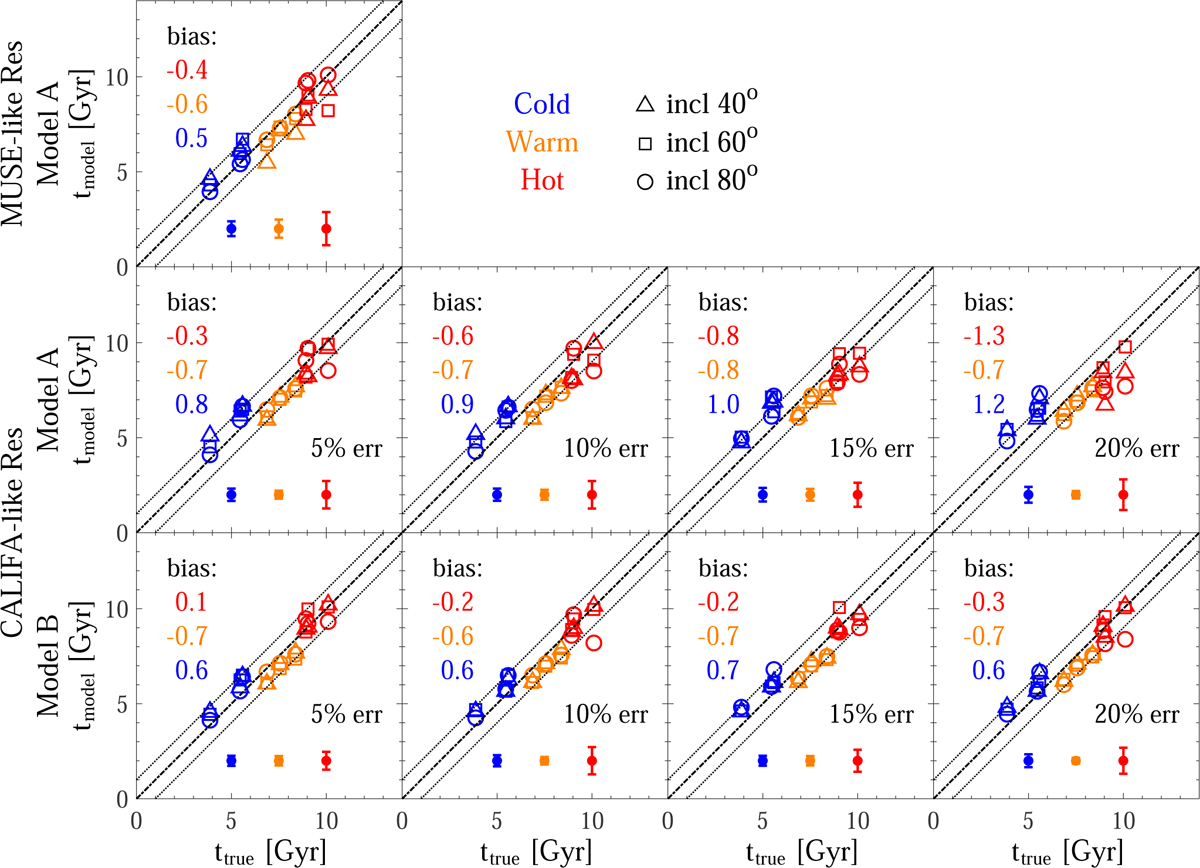Fig. 7

Download original image
One-to-one comparison of the true and model-recovered age of the cold, warm, and hot orbit components for all mock data sets. Top left panel: results using model A and mock data with a MUSE-like spatial resolution from Zhu et al. (2020). Middle panels: results using model A and mock data with a CALIFA-like spatial resolution. Bottom panels: results using model B and mock data with a CALIFA-like spatial resolution. In the middle and bottom panels, the relative observational errors equal 5%, 10%, 15%, and 20% from left to right. The triangles, squares, and circles represent the mock data sets with inclination angles of 40°, 60°, and 80°. Blue, orange, and red markers denote the cold (λz > 0.8), warm (0.25 < λz < 0.8), and hot (λz ≤ 0.25) components. Their corresponding mean bias and statistical uncertainty are shown by the coloured texts and error bars in each panel. The dashed lines represent the equality of tmodel and ttrue, while the dotted lines are ±1 Gyr away from the dashed lines.
Current usage metrics show cumulative count of Article Views (full-text article views including HTML views, PDF and ePub downloads, according to the available data) and Abstracts Views on Vision4Press platform.
Data correspond to usage on the plateform after 2015. The current usage metrics is available 48-96 hours after online publication and is updated daily on week days.
Initial download of the metrics may take a while.


